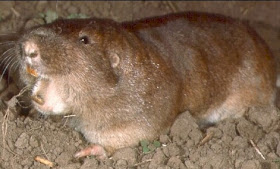 The Wildlife | Glass Lizard | Glass Lizard are found in the Old and New Worlds, ranging in areas of Indonesia, southern Asia, the Near East, southeastern Europe, North Africa, and North America. The European and American legless lizards are in the family Anguidae, Anniellidae, and Xenosauridae; the Australasian ones in the family Pygopodidae. Some of the Anguidae legless lizards are called lateral fold lizards due to the pronounced lateral fold that runs down each side. Other genuses, such as the Gerrhonotus and Elgaria, are Glass Lizard .
The Wildlife | Glass Lizard | Glass Lizard are found in the Old and New Worlds, ranging in areas of Indonesia, southern Asia, the Near East, southeastern Europe, North Africa, and North America. The European and American legless lizards are in the family Anguidae, Anniellidae, and Xenosauridae; the Australasian ones in the family Pygopodidae. Some of the Anguidae legless lizards are called lateral fold lizards due to the pronounced lateral fold that runs down each side. Other genuses, such as the Gerrhonotus and Elgaria, are Glass Lizard . The Glass Lizard can get up to 1.2 m (4′) in length although two-thirds of this length is their tail. In previous reptile Wild Facts we have discussed that one of the main defense mechanisms for some lizards is to drop off part of their tail. The Glass Lizard is no exception and has the ability to easily break off sections of their long tail. This is actually how they get their name. Get it? Both glass and these lizards break easily? This is actually a pretty clever naming convention, for once. The coolest thing about this is the fact that the portion of the tail that breaks off remains mobile while the rest of the lizard stays motionless. Obviously this distracts the predator and allows the Glass Lizard to make an escape when the time is right. Unfortunately this cool defense mechanism requires a lot of energy to regenerate a new tail so it will often be smaller. I guess this is a good way to tell how often the Glass Lizard had to drop off its tail.
The Glass Lizard can get up to 1.2 m (4′) in length although two-thirds of this length is their tail. In previous reptile Wild Facts we have discussed that one of the main defense mechanisms for some lizards is to drop off part of their tail. The Glass Lizard is no exception and has the ability to easily break off sections of their long tail. This is actually how they get their name. Get it? Both glass and these lizards break easily? This is actually a pretty clever naming convention, for once. The coolest thing about this is the fact that the portion of the tail that breaks off remains mobile while the rest of the lizard stays motionless. Obviously this distracts the predator and allows the Glass Lizard to make an escape when the time is right. Unfortunately this cool defense mechanism requires a lot of energy to regenerate a new tail so it will often be smaller. I guess this is a good way to tell how often the Glass Lizard had to drop off its tail.
Glass lizards are very common in coastal dune habitats and are sometimes even found beneath debris at the tide line. Glass Lizards are diurnal, meaning that they are awake during the day. Glass lizards earned their name by their propensity to "shatter" by breaking their tail, often in several pieces. The common belief that these pieces can rejoin is a myth, although they tail will slowly regrow over a period of months or years.
Glass Lizard
Glass Lizard
Glass Lizard
Glass Lizard
Glass Lizard
Glass Lizard




















































